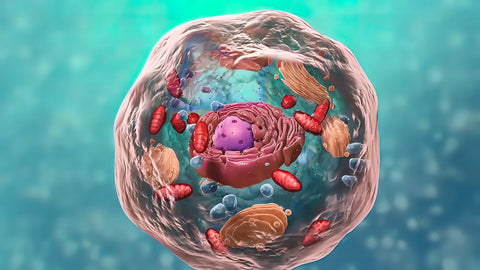In the article series on minerals, we have gone through many of the most well-known minerals and their functions in the body. Understanding the benefits of individual minerals is not difficult. But realizing the depth of how trace elements and certain vitamins interact at the cellular and even DNA level requires a little more time and thought…
Vitamin D for resilience
Hälso-Sweden has increasingly realized the importance of vitamin D for the immune system, well-being and mental health. Many take supplements of vitamin D in winter when the sun is scarce in our latitudes. Some know that we should take magnesium and also vitamin K2 together with vitamin D.
But what happens if we get too much vitamin D without its co-factors? Maybe the Swedish Food Agency's advice not to take excessive doses of vitamin D is not so crazy after all...
There are studies that show the importance of vitamin D for the immune system. But some people can take high doses of vitamin D without the levels appearing to rise. Inflammation and infections can affect the body's ability to actively use vitamin D. How you measure is also important as vitamin D exists in several forms.
Vitamin D and calcium storage
The role of vitamin D for the skeleton and bone structure has been known since the 1930s, it controls calcium absorption in the intestine and affects the parathyroid gland. A risk of unilaterally taking in too much vitamin D can be that too much calcium accumulates in the body.
Paired vitamin A and D at the DNA level
Magnesium is required for calcium to be stored and used correctly in the body.
But the hidden vitamin A (retinol) also has an irreplaceable synergy with vitamin D. The connection between vitamin D and retinol is of enormous importance for the body's mineral handling and for other messengers and hormones, among them melatonin .
Paired retinol and vitamin D are required to protect our cells against oxidation:
- retinol is required for copper-dependent enzymes that prevent iron from "rusting" (oxidizing)
- oxidized iron inhibits energy production in the mitochondria - we become more tired and more inflamed
- oxidized iron inhibits healthy blood formation and iron storage – in the long run, more iron does not help if this is the cause of anemia.
True vitamin A is not the same as beta-carotene
Not everyone has the right genes to be able to convert beta-carotene from vegetables in the right amount into real vitamin A that the cells can use. Other things that interfere with the conversion to retinol or increase the need for it can be:
- problems with, or a "sluggish" thyroid gland which is very common
- intestinal diseases
- infections
- a liver that is busy with other things (environmental toxins, alcohol, unbalanced polyunsaturated fatty acids)
If there is no access to real vitamin A, when taking supplements of vitamin D, the important connection at the receptor level will be missing.
Vitamin D is formed when the sun's rays reach our skin in the middle of the day. We need available vitamin A just as much when we get vitamin D from the sun outdoors as when we take a canned supplement, even if the supplement comes from a natural source such as sheep's wool, for example.
Food with the nutrition our cells are waiting for
But vitamins A and D's marked path in our DNA - as well as the morbidity today despite all modern medical care and medicine - shows that we should not stop eating foods rich in these two - especially liver and other offal. Not only for the unique vitamin content of these foods but also the important minerals therein, packaged in the right forms.
Vitamin A is also needed for good eyesight, for mucous membranes, skin and good fetal development.
Food sources of vitamin A:
- live from beef, lamb, chicken, fish and other offal
- butter
- cheeses, especially soft ones such as brie
- egg




